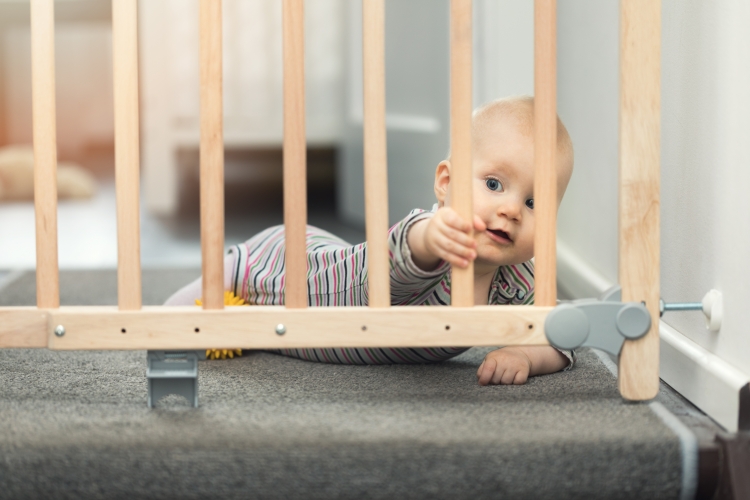This is the second in a two-part series on what to do when you’re moving with a baby. In Part I, we offered some tips for making move day go smoothly with a newborn.
In this post, we focus specifically on how to create a safe environment for your child in your new home. Most homes aren’t built with babies in mind. They contain natural hazards for infants and toddlers. As your child develops, you’ll want to know which hazards pose the greatest risks and how to neutralize them.
To get started, consider these major categories:
Choking hazards
As you unpack your belongings and settle into your new home, think carefully about which objects are small enough for a child to swallow but large enough to obstruct their airway. Examples include coins, marbles, paper clips, buttons, and so on. Considering that you’ve just moved, don’t forget that packing peanuts can also be a hazard. They should be collected and disposed of immediately after you unpack.
Suffocation hazards
Cords and plastic bags are two hazards to look for when child-proofing your home. If the windows in your home have Venetian blinds, consider disposing of them or at least tying up the cords so they’re out of your child’s reach. Likewise, plastic bags should be inaccessible to your child. Mattress bags can be a particular hazard when moving, so dispose of them immediately or store them in a secure place that’s out of baby’s reach.
Falling hazards
 There are a few simple things you can do to reduce your child’s risk of falling from a dangerous height. First, make use of baby gates to block access to stairways and prevent your child from taking a tumble. You should also invest in some window guards, which will allow you to open your windows but prevent your child from climbing through and falling. Another hazard to consider is whether your child could be hurt falling from their crib. When setting up baby’s room in your new home, consider putting the crib together lower to the floor to prevent injury. (If that’s not an option, check out this article for more tips on how to keep babies from climbing out of their cribs.)
There are a few simple things you can do to reduce your child’s risk of falling from a dangerous height. First, make use of baby gates to block access to stairways and prevent your child from taking a tumble. You should also invest in some window guards, which will allow you to open your windows but prevent your child from climbing through and falling. Another hazard to consider is whether your child could be hurt falling from their crib. When setting up baby’s room in your new home, consider putting the crib together lower to the floor to prevent injury. (If that’s not an option, check out this article for more tips on how to keep babies from climbing out of their cribs.)
Poison hazards
Many families store cleaning products under their sink, and children risk ingesting these hazardous liquids. The simplest solution is to store poisonous liquids out of reach, where children can’t access them. It wouldn’t hurt to secure the cabinet with child-proof locks as well. Regardless, you should keep handy the phone number and website of the nearest poison control center.
Lead paint and asbestos are two other hazards that fall in this category. Before you move into a new home (especially if it’s older), confirm that it is free of lead paint and asbestos.
Electrocution hazards
To prevent children from sticking a metal object into an electrical outlet, child-proof your home with electrical outlet covers.
Drowning hazards
If your new home has a water feature, such as a fountain or pond, consider keeping it covered when unattended.
Sharp edges/cutting hazards
As you unpack your furniture, ensure corner guards are placed on any sharp edges to protect your baby or young children from the risk of injury.
By addressing these safety concerns, you can create a secure and nurturing environment for your baby in your new home. Prioritize your child’s safety by proactively identifying and mitigating potential hazards.


